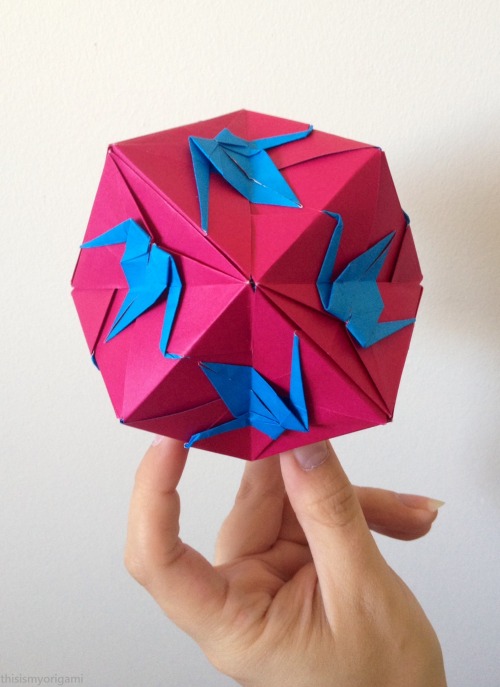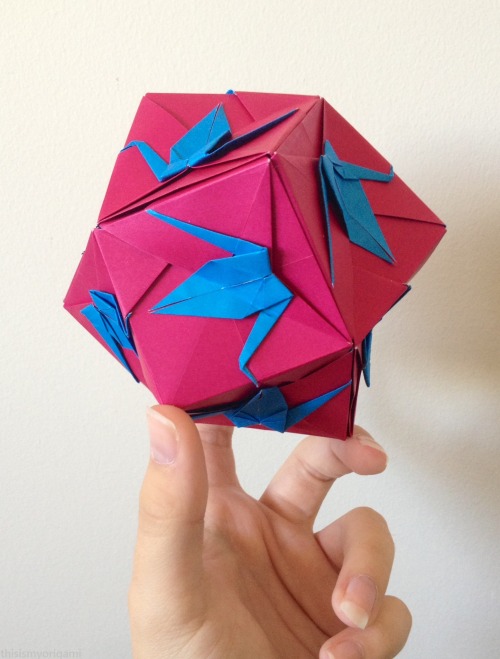Do Not Go Where The Path May Lead, Go Instead Where There Is No Path And Leave A Trail. —Ralph Waldo

Do not go where the path may lead, go instead where there is no path and leave a trail. —Ralph Waldo Emerson
More Posts from Ritasakano and Others

(Image caption: Motor neurons (green) form synapses (highlighted in magenta) on muscle fibers in a fruit fly. MIT neuroscientists have discovered a pathway that contributes to strengthening these synapses. Credit: Troy Littleton)
Neuroscientists reveal how the brain can enhance connections
When the brain forms memories or learns a new task, it encodes the new information by tuning connections between neurons. MIT neuroscientists have discovered a novel mechanism that contributes to the strengthening of these connections, also called synapses.
At each synapse, a presynaptic neuron sends chemical signals to one or more postsynaptic receiving cells. In most previous studies of how these connections evolve, scientists have focused on the role of the postsynaptic neurons. However, the MIT team has found that presynaptic neurons also influence connection strength.
“This mechanism that we’ve uncovered on the presynaptic side adds to a toolkit that we have for understanding how synapses can change,” says Troy Littleton, a professor in the departments of Biology and Brain and Cognitive Sciences at MIT, a member of MIT’s Picower Institute for Learning and Memory, and the senior author of the study, which appears in the Nov. 18 issue of Neuron.
Learning more about how synapses change their connections could help scientists better understand neurodevelopmental disorders such as autism, since many of the genetic alterations linked to autism are found in genes that code for synaptic proteins.
Richard Cho, a research scientist at the Picower Institute, is the paper’s lead author.
Rewiring the brain
One of the biggest questions in the field of neuroscience is how the brain rewires itself in response to changing behavioral conditions — an ability known as plasticity. This is particularly important during early development but continues throughout life as the brain learns and forms new memories.
Over the past 30 years, scientists have found that strong input to a postsynaptic cell causes it to traffic more receptors for neurotransmitters to its surface, amplifying the signal it receives from the presynaptic cell. This phenomenon, known as long-term potentiation (LTP), occurs following persistent, high-frequency stimulation of the synapse. Long-term depression (LTD), a weakening of the postsynaptic response caused by very low-frequency stimulation, can occur when these receptors are removed.
Scientists have focused less on the presynaptic neuron’s role in plasticity, in part because it is more difficult to study, Littleton says.
His lab has spent several years working out the mechanism for how presynaptic cells release neurotransmitter in response to spikes of electrical activity known as action potentials. When the presynaptic neuron registers an influx of calcium ions, carrying the electrical surge of the action potential, vesicles that store neurotransmitters fuse to the cell’s membrane and spill their contents outside the cell, where they bind to receptors on the postsynaptic neuron.
The presynaptic neuron also releases neurotransmitter in the absence of action potentials, in a process called spontaneous release. These “minis” have previously been thought to represent noise occurring in the brain. However, Littleton and Cho found that minis could be regulated to drive synaptic structural plasticity.
To investigate how synapses are strengthened, Littleton and Cho studied a type of synapse known as neuromuscular junctions, in fruit flies. The researchers stimulated the presynaptic neurons with a rapid series of action potentials over a short period of time. As expected, these cells released neurotransmitter synchronously with action potentials. However, to their surprise, the researchers found that mini events were greatly enhanced well after the electrical stimulation had ended.
“Every synapse in the brain is releasing these mini events, but people have largely ignored them because they only induce a very small amount of activity in the postsynaptic cell,” Littleton says. “When we gave a strong activity pulse to these neurons, these mini events, which are normally very low-frequency, suddenly ramped up and they stayed elevated for several minutes before going down.”
Synaptic growth
The enhancement of minis appears to provoke the postsynaptic neuron to release a signaling factor, still unidentified, that goes back to the presynaptic cell and activates an enzyme called PKA. This enzyme interacts with a vesicle protein called complexin, which normally acts as a brake, clamping vesicles to prevent release neurotransmitter until it’s needed. Stimulation by PKA modifies complexin so that it releases its grip on the neurotransmitter vesicles, producing mini events.
When these small packets of neurotransmitter are released at elevated rates, they help stimulate growth of new connections, known as boutons, between the presynaptic and postsynaptic neurons. This makes the postsynaptic neuron even more responsive to any future communication from the presynaptic neuron.
“Typically you have 70 or so of these boutons per cell, but if you stimulate the presynaptic cell you can grow new boutons very acutely. It will double the number of synapses that are formed,” Littleton says.
The researchers observed this process throughout the flies’ larval development, which lasts three to five days. However, Littleton and Cho demonstrated that acute changes in synaptic function could also lead to synaptic structural plasticity during development.
“Machinery in the presynaptic terminal can be modified in a very acute manner to drive certain forms of plasticity, which could be really important not only in development, but also in more mature states where synaptic changes can occur during behavioral processes like learning and memory,” Cho says.
The study is significant because it is among the first to reveal how presynaptic neurons contribute to plasticity, says Maria Bykhovskaia, a professor of neurology at Wayne State University School of Medicine who was not involved in the research.
“It was known that the growth of neural connections was determined by activity, but specifically what was going on was not very clear,” Bykhovskaia says. “They beautifully used Drosophila to determine the molecular pathway.”
Littleton’s lab is now trying to figure out more of the mechanistic details of how complexin controls vesicle release.

Noren - Tedomari Tsubame Niigata ken
Orion e a explosão de uma estrela.

ALMA views a stellar explosion in Orion
Stellar explosions are most often associated with supernovae, the spectacular deaths of stars. But new ALMA observations of the Orion Nebula complex provide insights into explosions at the other end of the stellar life cycle, star birth. Astronomers captured these dramatic images of the remains of a 500-year-old explosion as they explored the firework-like debris from the birth of a group of massive stars, demonstrating that star formation can be a violent and explosive process too.
The colours in the ALMA data represent the relative Doppler shifting of the millimetre-wavelength light emitted by carbon monoxide gas. The blue colour in the ALMA data represents gas approaching at the highest speeds; the red colour is from gas moving toward us more slowly.
The background image includes optical and near-infrared imaging from both the Gemini South and ESO Very Large Telescope. The famous Trapezium Cluster of hot young stars appears towards the bottom of this image. The ALMA data do not cover the full image shown here.
Credit: ALMA (ESO/NAOJ/NRAO), J. Bally/H. Drass et al.

Click image for 668 x 900 size.
On the right an ad for mosquito coil product, for King Corporation., on the left “gold standard” for ink.
Thanks to bnz, Paula Wirth, and yoboseiyo for the info.
Scanned from Taschen’s “Japanese Beauties”.
Katori Senkou mosquito coil ad, 1900-1929.

New results from our Juno mission suggest the planet is home to “shallow lightning.” An unexpected form of electrical discharge, shallow lightning comes from a unique ammonia-water solution.
It was previously thought that lightning on Jupiter was similar to Earth, forming only in thunderstorms where water exists in all its phases – ice, liquid, and gas. But flashes observed at altitudes too cold for pure liquid water to exist told a different story. This illustration uses data obtained by the mission to show what these high-altitude electrical storms look like.
Understanding the inner workings of Jupiter allows us to develop theories about atmospheres on other planets and exoplanets!
Illustration Credit: NASA/JPL-Caltech/SwRI/MSSS/Gerald Eichstädt/Heidi N. Becker/Koji Kuramura
Make sure to follow us on Tumblr for your regular dose of space: http://nasa.tumblr.com



Crane Trisoctahedron designed by Fumiaki Shingu
Instructions
-
 subtoymore liked this · 1 year ago
subtoymore liked this · 1 year ago -
 heraldchaos liked this · 4 years ago
heraldchaos liked this · 4 years ago -
 viscochit0 liked this · 4 years ago
viscochit0 liked this · 4 years ago -
 sietesoles liked this · 4 years ago
sietesoles liked this · 4 years ago -
 rhodeytonies liked this · 4 years ago
rhodeytonies liked this · 4 years ago -
 theartfulbandit liked this · 6 years ago
theartfulbandit liked this · 6 years ago -
 wickedrose10 liked this · 6 years ago
wickedrose10 liked this · 6 years ago -
 beartrice-inn-unnir reblogged this · 6 years ago
beartrice-inn-unnir reblogged this · 6 years ago -
 shambalasims liked this · 6 years ago
shambalasims liked this · 6 years ago -
 at-the-centre-of-it-all reblogged this · 6 years ago
at-the-centre-of-it-all reblogged this · 6 years ago -
 artist-and-scientist reblogged this · 6 years ago
artist-and-scientist reblogged this · 6 years ago -
 silverwolf02001 liked this · 6 years ago
silverwolf02001 liked this · 6 years ago -
 imthedoctorbasicallyfun liked this · 7 years ago
imthedoctorbasicallyfun liked this · 7 years ago -
 cantouchthisgirl-blog liked this · 7 years ago
cantouchthisgirl-blog liked this · 7 years ago -
 catsmammyhk-blog liked this · 7 years ago
catsmammyhk-blog liked this · 7 years ago -
 cloudcolouredthoughts liked this · 7 years ago
cloudcolouredthoughts liked this · 7 years ago -
 child-lost-in-space liked this · 7 years ago
child-lost-in-space liked this · 7 years ago -
 z3d-zd liked this · 7 years ago
z3d-zd liked this · 7 years ago -
 thisiskaylin reblogged this · 7 years ago
thisiskaylin reblogged this · 7 years ago -
 thisiskaylin liked this · 7 years ago
thisiskaylin liked this · 7 years ago -
 doortothelibrary-blog reblogged this · 7 years ago
doortothelibrary-blog reblogged this · 7 years ago -
 ebtrips liked this · 7 years ago
ebtrips liked this · 7 years ago -
 iosdev321 reblogged this · 7 years ago
iosdev321 reblogged this · 7 years ago -
 cvntfession-blog reblogged this · 7 years ago
cvntfession-blog reblogged this · 7 years ago -
 babygirlb1998-blog reblogged this · 7 years ago
babygirlb1998-blog reblogged this · 7 years ago -
 0nlyg0odvibe420 reblogged this · 7 years ago
0nlyg0odvibe420 reblogged this · 7 years ago -
 bethofknees reblogged this · 7 years ago
bethofknees reblogged this · 7 years ago -
 junkiefrom3426-blog reblogged this · 7 years ago
junkiefrom3426-blog reblogged this · 7 years ago -
 aspacegeek-blog liked this · 7 years ago
aspacegeek-blog liked this · 7 years ago -
 massagedirectory reblogged this · 7 years ago
massagedirectory reblogged this · 7 years ago -
 babybabycacti-blog reblogged this · 7 years ago
babybabycacti-blog reblogged this · 7 years ago -
 litgang69-blog reblogged this · 7 years ago
litgang69-blog reblogged this · 7 years ago -
 vendetta-baby-revofev-blog reblogged this · 7 years ago
vendetta-baby-revofev-blog reblogged this · 7 years ago
